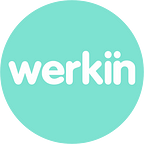How Technology Can Map Transformative Employee Journeys
According to the LinkedIn’s 2018 Workplace Learning Report, the line between learning and working is becoming increasingly blurred, and will continue to do so with the rising number of millennials joining the workforce. Research shows if millennials are not learning, they will not work for you. They will leave for another organisation seeking opportunities to learn and be challenged. More so than any other generation, millennials prioritise learning and development.
According to LinkedIn’s 2018 Workplace Learning Report, 94% of employees say they would stay at a company longer if it invested in their career development. Yet learning is no longer limited to tertiary education, professional training, online courses or even books. In fact, according to the LinkedIn report, 68% of employees prefer to learn at work and 49% prefer to learn at the point of need. Technology has made learning ubiquitous, enabling it to occur as we complete our daily work.
In fact, when younger generations assess a potential new employer, subconsciously, they want to know:
What kind of employee journey will I experience at this organisation?
What will be the quality of the challenges and mentors I encounter?
How does this organisation’s learning experience compare with other opportunities I’m considering?
According to learning and development experts, the best types of learning happen on the job, when a manager, peer or mentor supports an employee to find their own answers. Neuroscientists say people retain this type of learning longer than simply being told what to do. Also, overcoming difficulties builds efficacy and learning agility — two attributes increasingly associated with senior executive high performance.
Professor Joseph Campbell, a mythology scholar, popularised the concept of the archetypal Hero’s Journey. He proposed that humans yearn to experience adventures that challenge and teach, and that learning experiences progress through four stages, which are consistent in stories told across cultures:
1. Departure: The hero lives in the ordinary world and receives a call to embark on an adventure.
2. Initiation: When the hero enters the new world, she faces tasks or trials, either alone or with the assistance of mentors. She encounters people, tasks, challenges and obstacles that threaten to thwart her goals. These are opportunities to learn and develop.
3. Central crisis: The hero reaches the central crisis of her adventure, where she must use her newly acquired skills to overcome the main obstacle to achieving results.
4. The return: The hero must then return to the team with her learning. She is transformed by the stretch assignment and has gained wisdom, which she is ready to impart to a new hero.
Optimising each of these stages of the learning journey and aligning them with millennials’ aspirations is the new objective for workplace learning and development specialists.
It’s now possible to plan, track and measure transformative employee journeys from the very first touchpoint in a job advertisement, to interviews, onboarding, orientation, stretch assignments and mentors. Rather than leaving career development to chance, technology can help plan, communicate and schedule learning experiences and provide access to relevant mentors, on everyday connected devices.
Learning platforms today feature algorithms that impartially match employees with missions, stretch assignments as well as suitable mentors. Real-time notifications alert mentees when their mentor is nearby. Team leaders can set development goals, assign mentors and schedule meetings. The platform also prompts users for feedback. It captures data and analytics at each stage and touchpoint of the learning journey to unlock further opportunities to optimise the learning experience. WERKIN’s tech-enabled mentoring platform embeds learning and development into everyday work practices on connected devices.
Forward-thinking organisations must satisfy the learning needs of today’s workforce while preparing employees for tomorrow’s business challenges. Workplace learning technology can provide the infrastructure to enrich employee journeys and experiences. Technology can meet learners at their point of need, and align development opportunities with their aspirations as well as business challenges. Connected devices can engage learners through platforms and everyday connected devices they’re familiar with.
Technology can make new team members a hero in their own career story.
Originally published at getwerkin.com on October 30, 2018.
